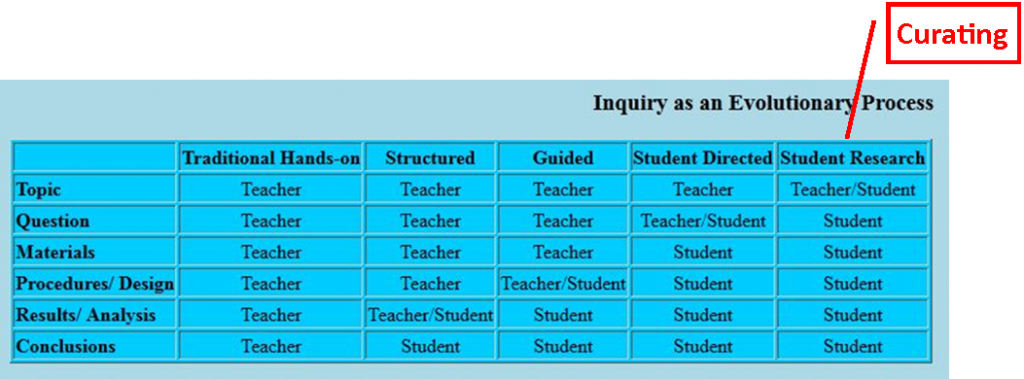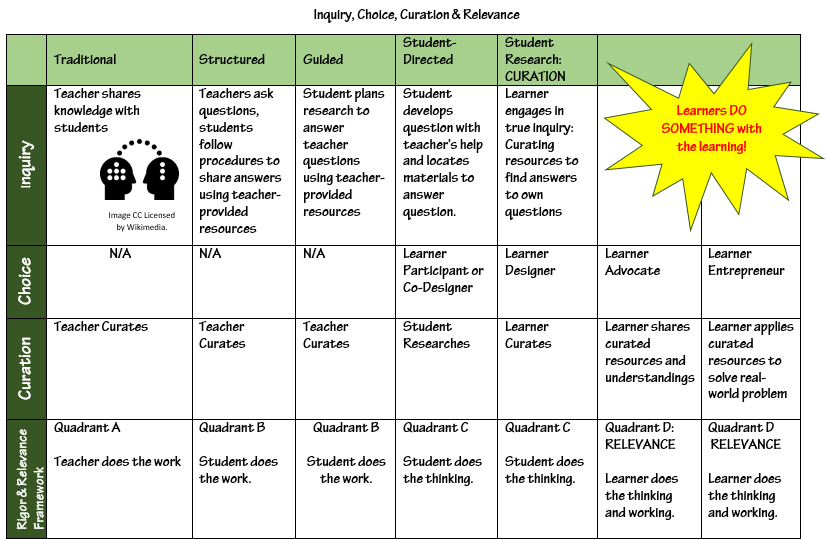Archives
| M | T | W | T | F | S | S |
|---|---|---|---|---|---|---|
| « Aug | Jan » | |||||
| 1 | ||||||
| 2 | 3 | 4 | 5 | 6 | 7 | 8 |
| 9 | 10 | 11 | 12 | 13 | 14 | 15 |
| 16 | 17 | 18 | 19 | 20 | 21 | 22 |
| 23 | 24 | 25 | 26 | 27 | 28 | 29 |
| 30 | ||||||
Inquiry, Choice, Curating and Relevance
I continue to work towards connecting the dots between the deep inquiry process that student curation brings, and making learning personal for each student.
Recently, Barbara Bray & Kathleen McClaskey, authors of Make Learning Personal and the most knowledgeable people I know on the topic of personalized learning published a brilliant infographic, illustrated by the amazing Sylvia Duckworth, on “The Continuum of Choice.”
This reminded me immediately of another graphic that depicts the evolution of inquiry – moving control of the learning –or inquiry –from the teacher, to the student, created by Robert Bonnstetter. In an earlier blog post, I speculated that the column furthest to the right demonstrates student curation. I started wondering, where does student choice fall in this process?

By Ronald J. Bonnstetter: Available http://wolfweb.unr.edu/homepage/jcannon/ejse/bonnstetter.html
While student curation is an important part of transferring ownership of learning to the student, and allows for them to think deeply and make connections as learners, I can see by looking at the “Continuum of Student Choice” that curation is not the final step. We need to provide time and support for our learners to take the next step, and apply the learning and understandings they have reached through the process of curating to solving real world problems, or to create something new.
Because, it’s about the transfer. If we want students to have enduring understanding, and be able to use their learning in practical ways, to solve real world, messy, unstructured problems. We need to provide the opportunity for them to practice this kind of learning transfer in a safe and supported environment.




